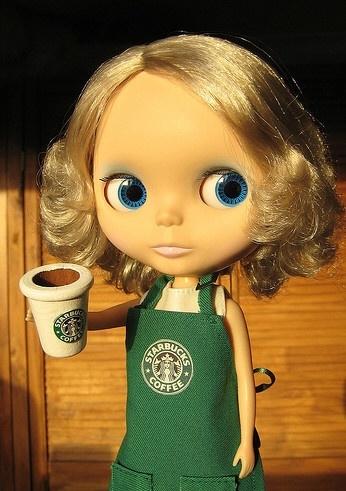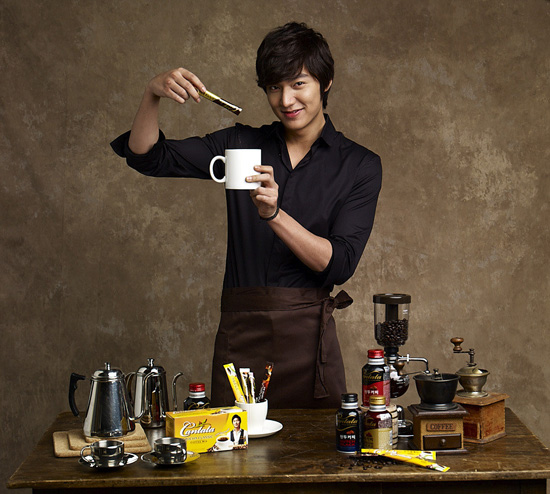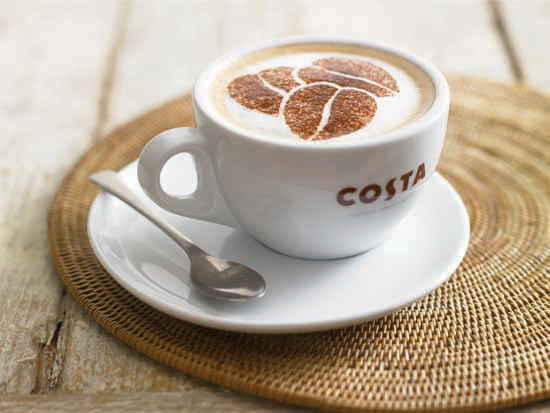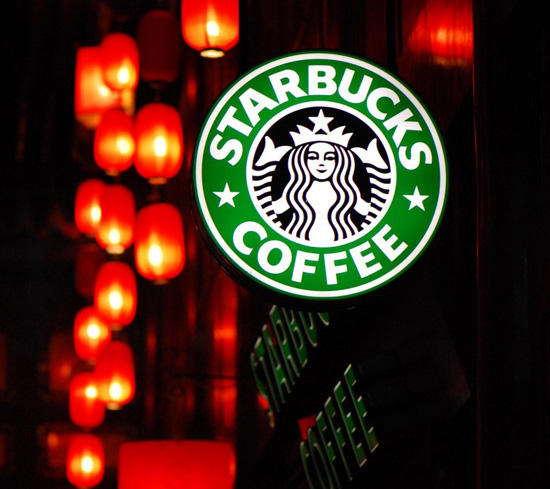Why do Chinese people like coffee when they eat steamed buns with coffee?
Tianjin GouBuLi Group has accepted Australia's largest coffee chain brand. Please remember to match coffee when eating GouBuLi steamed buns in the future.
Zhang Yansen, chairman of Goubuli Group, explained, "China's coffee consumption market is growing at about 15% a year, much higher than the 2% annual growth rate of the international market." It is optimistic about the future of the coffee market that GouBuLi Group is determined to enter this field. Zhang Yansen also said, "if you only sell steamed buns, the imagination space for investors is limited after all."
It is no exaggeration to say that coffee is all-pervasive in China. (for more exclusive financial news, please add WeChat account cbn-yicai)

KFC and McDonald's that sell fast food sell coffee, there will be at least two coffee shops within 500 meters of the bank, and coffee shops in shopping malls have become standard (there are no fewer than three Starbucks in Shanghai Lujiazui Zhengda Square alone). Commercial buildings and offices are dominated by coffee shops, and it is the dream of countless literary and artistic young people to open their own coffee shop.
It seems that in this year or two, Chinese people quickly fell in love with coffee, while tea, which represents thousands of years of Chinese civilization, has become a choice for the elderly or very few.
In fact, compared with neighboring countries, Chinese people are not addicted to coffee, and there is a reason for coffee fever.
South Koreans are more addicted to coffee than China.
Koreans love coffee to such an extent that they would rather not eat than drink coffee.
According to Yonhap news agency, the single type of food that South Koreans consume most frequently is coffee, which is consumed 12.2 times a week. This was followed by cabbage kimchi (11.9 times), candy (9.7 times), miscellaneous grain rice (9.6 times) and other kimchi (4.6 times).
South Korea consumes 100000 tons of coffee a year, and adults drink an average of 298 cups of coffee a year. This means that Koreans drink coffee six days a week. Finally understand why the protagonists in Korean TV dramas like to meet in the coffee shop, because coffee is simply their "fate" ah!

There are now more than 20,000 coffee shops in South Korea. The increase in coffee shops marks a gradual rise in the status of coffee in Korean culture. In South Korea, the coffee shop is not only a place where men and women, young and old meet, but also a place for students and office workers to study and hold meetings. South Korean coffee shops not only have a comfortable environment and provide wireless network, but also provide mobile phone charging devices, magazines and other convenient services.
Compared with the average Korean who drinks 298 cups of coffee a year, China now consumes only 4 cups of coffee per person per year, and even in Beijing, Shanghai and Guangzhou, it is only 20 cups, while this figure has reached 200 cups in Japan. Chinese people really don't have coffee addiction. But China's coffee market is growing at an impressive 15% a year, thanks to China's huge, untapped coffee market.
Everyone wants a piece of the huge Chinese market.
According to the Financial Times, world coffee consumption is currently growing at an annual rate of only 2 per cent, while China's coffee consumption is growing at about 15 per cent a year, more than seven times the global growth rate. In addition, industry data show that China's coffee market will enter a period of rapid growth in the next 10 years, and its consumption is expected to reach 300 billion yuan by 2020.
Who doesn't covet 300 billion of the market?
A steady stream of international coffee chain brands have been racing horse enclosures in China, and there are coffee shops in crowded places. The competition between brands provides the greatest convenience for consumers, especially in the north, Shanghai and Guangzhou. Finding a coffee shop should be much faster than looking for a public toilet.
Costa: if you can't kill Starbucks, go home.
Since Costa entered China in 2008, the competition has been aimed at Starbucks, which has been in the Chinese market for 12 years. The slogan of its Asia-Pacific president is "go home if you can't kill Starbucks."

Compared with Starbucks, COSTA is somewhat dull and rigid. The British brand lacks the gene for ease and teasing in its bones.
According to public statistics, in European and American markets, COSTA has gradually kept pace with Starbucks and even surpassed them since 2007. However, in China, due to the time lag in entering the market, it may take more efforts to catch up.
Unlike Starbucks, WhitBread Group, the parent company behind COSTA, ranks among the top 100 listed companies in the UK, and Pizza Hut is also its brand. In China, its partner is Beijing Hualian Group, which has two A-share listed companies with strong strength. Both jointly funded the establishment of Hualian Kashijia (Beijing) Food and Beverage Management Co., Ltd.
For now, COSTA and Starbucks are in a showdown, and the pressure on each other will gradually become apparent.
Starbucks: opening up the wasteland for Chinese Coffee Culture
In 1999, Starbucks opened its first store in China at International Trade in Beijing. Over the past 15 years, Starbucks has positioned its stores as a fashionable place to meet friends and get close to the Western way of life, and Chinese coffee culture has been extended as Starbucks expands on Chinese soil. Starbucks' huge popularity has even changed the taste buds of Chinese people, and China's consumption of freshly brewed coffee is also increasing.

Until today, a cup of Starbucks has become a symbol of fashion and taste, although non-Starbucks fans will take a negative view of it.
With the domestic consumption level becoming higher and higher, coffee, a western beverage culture, is gradually accepted by more and more Chinese people, and coffee culture begins to infiltrate into people's lives. Coffee is often not just a way to refresh people. It is more representative of fashion and taste, and finally reflects the high-quality and elegant modern way of life, which is only part of the change.
In the 16 years since it entered China, Starbucks has opened nearly 1500 stores. However, the US-based five-year Plan says Starbucks will have 3400 stores in China by 2019.
From this point of view, it is not impossible for Starbucks to open its stores to the entrance of the neighborhood in the future.
Korean Coffee: with the help of Korean TV dramas
Since 2012, Korean enterprises have entered the Chinese beverage market on a large scale. Up to now, Korean coffee stores have opened more than 700 stores in China. It is predicted that the market size of Chinese coffee stores will grow from 70 billion yuan in 2012 to 3 trillion yuan in the future.
In recent years, Korean coffee shop brands, represented by coffee accompany you and diffuse coffee, are gradually covering every corner of many cities in China. The statistics also reflect the growing "Korean wave" in the coffee shop field.

Among the Korean coffee shop brands, coffee accompany you is the most outstanding. In just two years since entering China, it has opened 407 stores and is still expanding at a high speed, and its expansion momentum has even surpassed that of Starbucks.
Unlike the relatively simple taste of tea, Korean coffee is more gaudy in the number of products.
In terms of product richness, the average number of products of Korean coffee shop brands is 76, almost double that of 41 coffee shop brands in Europe and the United States. In addition to coffee, tea, smoothies, cakes, sandwiches and other common categories of coffee shop brands, Korean coffee shop brands have also added smoothie, soda, ice cream, cereal lattes, muffin toast and other products. At the same time, unlike European and American coffee shop brands and Taiwan coffee shop brands, Korean coffee shop brands also focus on non-coffee drinks, accounting for up to 49% of the total products, which is convenient for differentiated competition.
With the domestic consumption level becoming higher and higher, coffee, a western beverage culture, is gradually accepted by more and more Chinese people, and coffee culture also begins to infiltrate into people's lives. Coffee is often not just a way of refreshing. It more represents fashion and taste, and finally reflects the high-quality and elegant modern way of life, and this is only part of the change.
(source of reference: winner's website, Northern New News, China Economic Network, people's Daily, Shanghai Business Daily)
Important Notice :
前街咖啡 FrontStreet Coffee has moved to new addredd:
FrontStreet Coffee Address: 315,Donghua East Road,GuangZhou
Tel:020 38364473
- Prev

How to drink coffee and lose weight? how to drink coffee healthily?
According to media reports, some consumers developed palpitations, palpitations, nausea and other reactions after drinking slimming coffee, and eventually fainted after nausea, vomiting and other symptoms, and finally left because of sudden death. Family members are skeptical about the efficacy and side effects of slimming coffee, but in fact, there are still many women who think that drinking coffee can lose weight, and may even drink too much coffee every day. From nutrition
- Next

Animal Cafe Tokyo is very popular with owls, goats and rabbits
Chinanews.com, Jan. 22-according to the Central News Agency on the 22nd, cat cafes are not fresh in Tokyo, Japan, and animal fans can also go to rabbit coffee, goat coffee and even owl coffee shops. If you want to drink coffee and pat the owl at the owl store, you must wait in line an hour before the store opens. If you are late and do not show up at the scheduled time, you will not only waste 2000 yen.
Related
- Why can American refills for free? The difference between Americano and American drip pot coffee
- Being chased out of the rain in front of Starbucks?! Store: Sheltering from rain under umbrellas poses a safety hazard
- The white moonlight has changed?! Lucky launches "Big Winter Pear American"
- Hand-brewed coffee three-stage method, high-sweet and universal brewing method to share! What does the high sweet water level of hand-brewed coffee mean?
- What is the difference between raw, refined and full espresso coffee? How to extract espresso and taste good?
- A complete list of coffee bean names and their meanings! What is Yejia Shefi coffee? Where is Mantelin coffee?
- What grade does Arida Manor Kaduai coffee beans belong to? What treatment is Arida ASD slow anaerobic sun exposure?
- The milk tea cup becomes smaller?! Overlord Tea Girl launches a new "Return to Yunnan" series
- Accused of selling counterfeit and high-priced coffee beans! Well-known boutique coffee brand "Oukelao" bowed and apologized!
- How to make espresso dumplings? Can I eat coffee and glutinous rice balls together?

